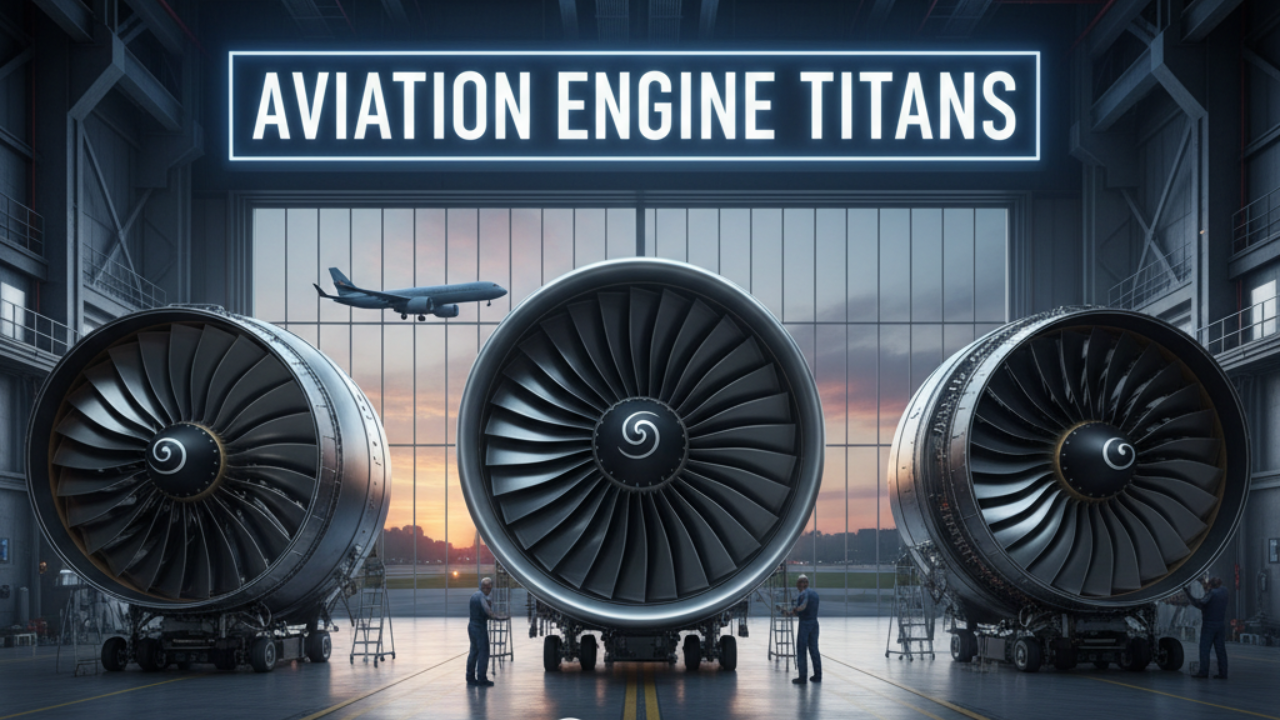
Post by : Meena Rani
The aviation world relies heavily on three major engine manufacturers: Rolls-Royce, General Electric (GE), and Pratt & Whitney. These companies have set the standards for performance, reliability, and innovation in commercial and military aircraft engines, fueling the growth of modern aviation.
Rolls-Royce, founded in 1906 in the UK, has a long legacy of luxury and precision engineering, later expanding into aircraft engines. General Electric, an American powerhouse since 1892, entered aviation in the mid-20th century, becoming a global leader in jet propulsion. Pratt & Whitney, founded in 1925, has been at the forefront of jet engine technology, especially in commercial airliners.
Each manufacturer has introduced landmark engines. Rolls-Royce’s Trent series revolutionized long-haul flights with efficiency and quiet operation. GE’s GE90 and GEnx engines are known for their thrust and fuel efficiency, powering aircraft like the Boeing 777 and 787. Pratt & Whitney’s PW1000G geared turbofan engines reduce noise and fuel consumption, making them highly sought after by airlines.
The competition between these engine giants is intense, with airlines choosing engines based on fuel efficiency, reliability, and maintenance costs. Rolls-Royce often focuses on large long-haul aircraft, GE has a broad portfolio for both Boeing and Airbus, and Pratt & Whitney targets fuel efficiency and next-gen technology.
Despite their success, all three face challenges such as regulatory compliance, sustainability pressures, and technological innovation demands. They continually invest in research to produce lighter, quieter, and more fuel-efficient engines that meet environmental standards.
The engines produced by Rolls-Royce, GE, and Pratt & Whitney have transformed air travel. Passengers benefit from safer, smoother, and more fuel-efficient flights, while airlines gain cost-effective and reliable engine options. The global aerospace supply chain also thrives on this competition, driving economic growth.
As aviation moves toward sustainability, these companies are exploring hybrid-electric engines, alternative fuels, and digital engine monitoring systems. Their rivalry ensures that innovation in aircraft propulsion continues to advance rapidly, shaping the future of global air travel.
Rolls-Royce, GE, and Pratt & Whitney are more than engine manufacturers—they are pioneers that have powered aviation for decades. Their competition drives technology, efficiency, and global connectivity, keeping the skies safer and more efficient for the future.
Disclaimer: This article is for informational purposes only. Engine technologies and market data are subject to change; consult official sources for the latest updates.
Rolls-Royce engines, GE aviation, Pratt & Whitney, aircraft engines, aviation technology, jet engines, aerospace innovation, engine rivalry










Advances in Aerospace Technology and Commercial Aviation Recovery
Insights into breakthrough aerospace technologies and commercial aviation’s recovery amid 2025 chall

Defense Modernization and Strategic Spending Trends
Explore key trends in global defense modernization and strategic military spending shaping 2025 secu

Tens of Thousands Protest in Serbia on Anniversary of Deadly Roof Collapse
Tens of thousands in Novi Sad mark a year since a deadly station roof collapse that killed 16, prote

Canada PM Carney Apologizes to Trump Over Controversial Reagan Anti-Tariff Ad
Canadian PM Mark Carney apologized to President Trump over an Ontario anti-tariff ad quoting Reagan,

The ad that stirred a hornets nest, and made Canadian PM Carney say sorry to Trump
Canadian PM Mark Carney apologizes to US President Trump after a tariff-related ad causes diplomatic

Bengaluru-Mumbai Superfast Train Approved After 30-Year Wait
Railways approves new superfast train connecting Bengaluru and Mumbai, ending a 30-year demand, easi